Easy Rainbow Abstract Art for Your Home
by hoanglan96 in Design > Art
1222 Views, 12 Favorites, 0 Comments
Easy Rainbow Abstract Art for Your Home
.png)
A quick, cheap, beginner-friendly instructable that will teach you a little bit of color theory! Fun for the whole family!
I was looking to decorate my new bookshelf and wanted something special and personal rather than store bought art. And it has to fit in with my other decorations and figurines. I couldn't pick a color so why not use the rainbow instead - can't go wrong when done right.
Supplies
- 8.5x11 inch watercolor paper but you can adapt the same principles on any paper size. As long as it is thicker and can hold water without wrinkling, you can use any paper or canvas.
- Big pointy paintbrush (for acrylic paint)
- Palette or unused tupperware lid for mixing
- 4 acrylic paints:
- Red
- Yellow
- Blue
- White
- Note: If you want to skip blending (Step 7) altogether, you will need 7 colours:
- Red
- Orange
- Yellow
- Green
- Light Blue
- Blue
- Purple
- Pencil & eraser
- Ruler
- Used rag or paper towel for drying excess water off the brush
- Jar with tap water for brush washing
- Masking/artist tape
- Picture frame with 8.5x11 inch fit (optional)
Secure the Paper/Canvas
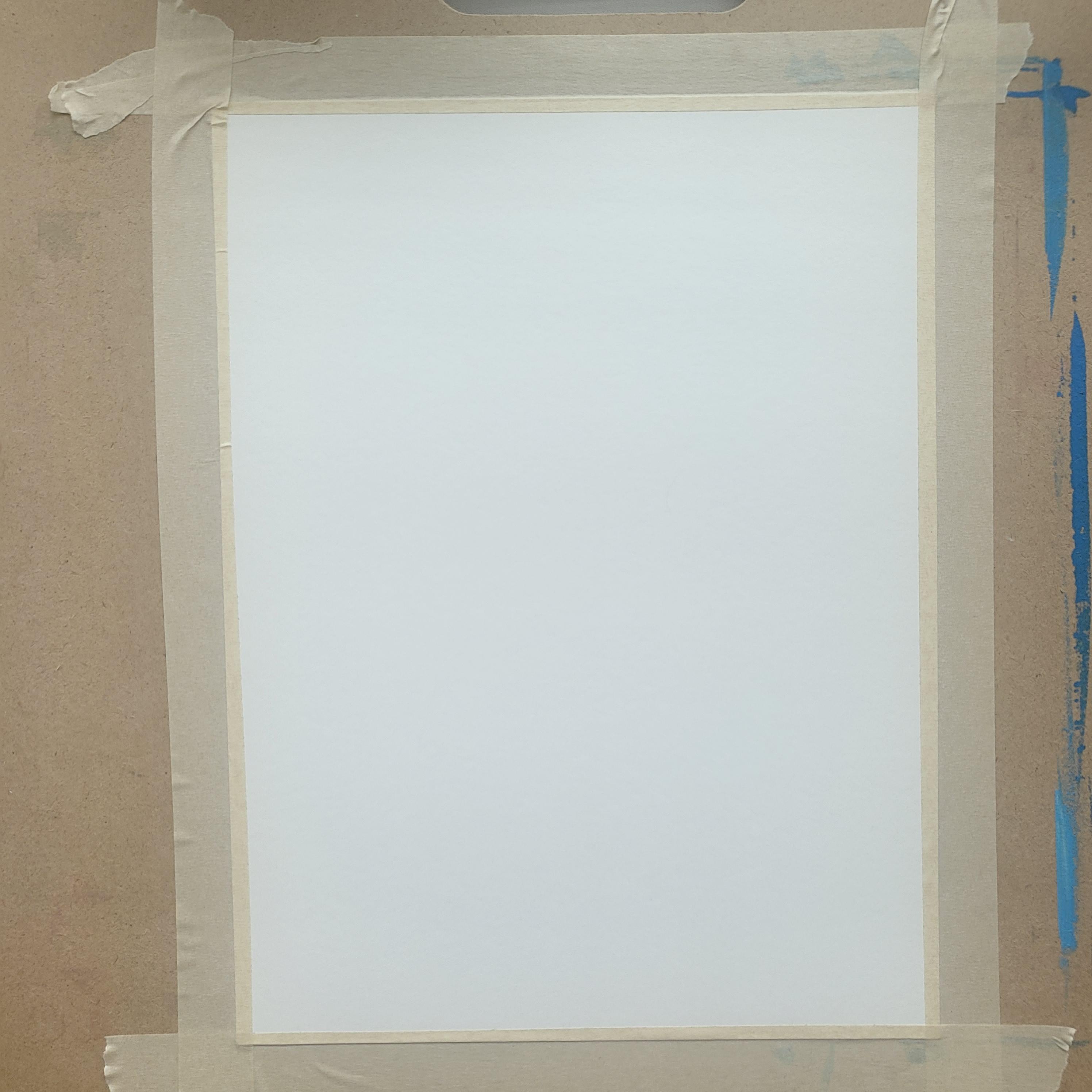
For watercolour paper, you want it nice and flat on your work table. I recommend to use cardboard or newspaper to keep your table clean.
Place your paper in portrat orientation and apply the masking tape along the borders. Aim for ~1/4 inch (5cm) for the taped borders.
Find the Middle
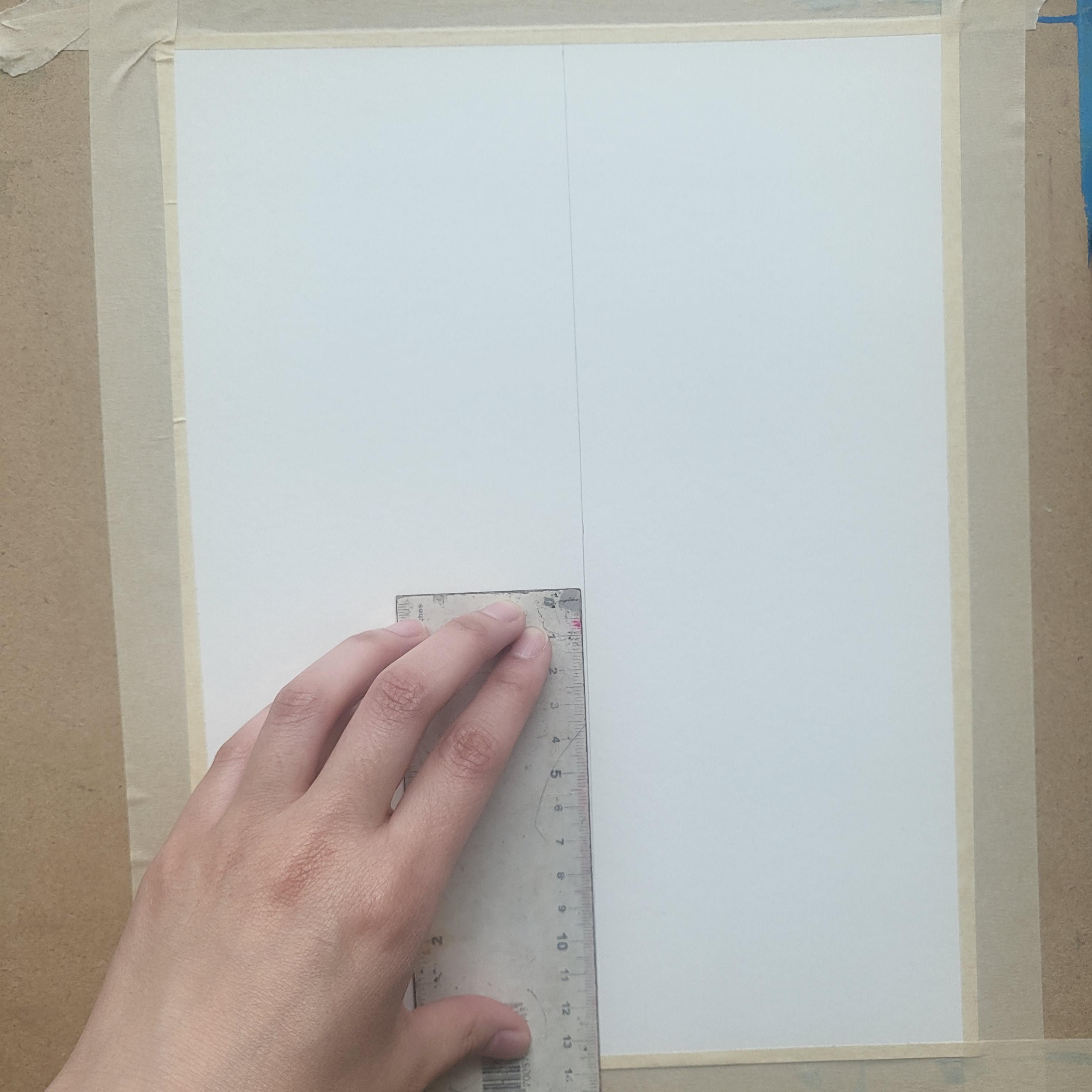
Use a ruler to measure the middle of the paper's length and width and dot them with the pencil (for 8.5 inch - 4.25 inch; 11 inch - 5.5 inch). Lightly trace a line to find the paper's center using the ruler or a large stiff-spined book.
Map Out Your Grid
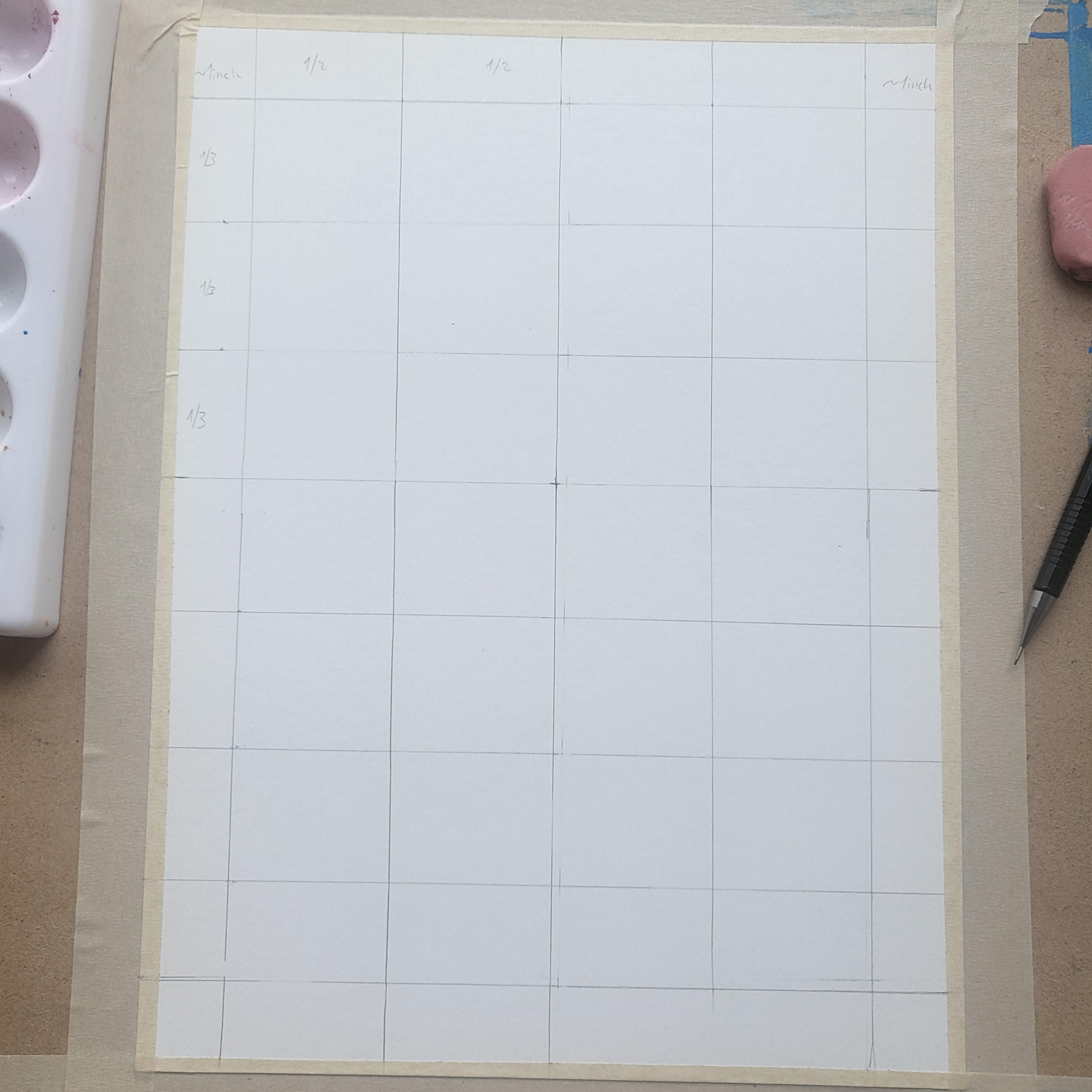
Trace 1 inch border along the paper edge to create a 6.5 x 9 inch rectangle inside. Don't worry, it doesn't have to be perfect as long as it's visually similar distances! Inside the new inner rectangle, divide into 6 rows and 4 columns. You should get 24 same-size squares (~1.6x1.5 inch) inside the border.
Draw Your Shapes
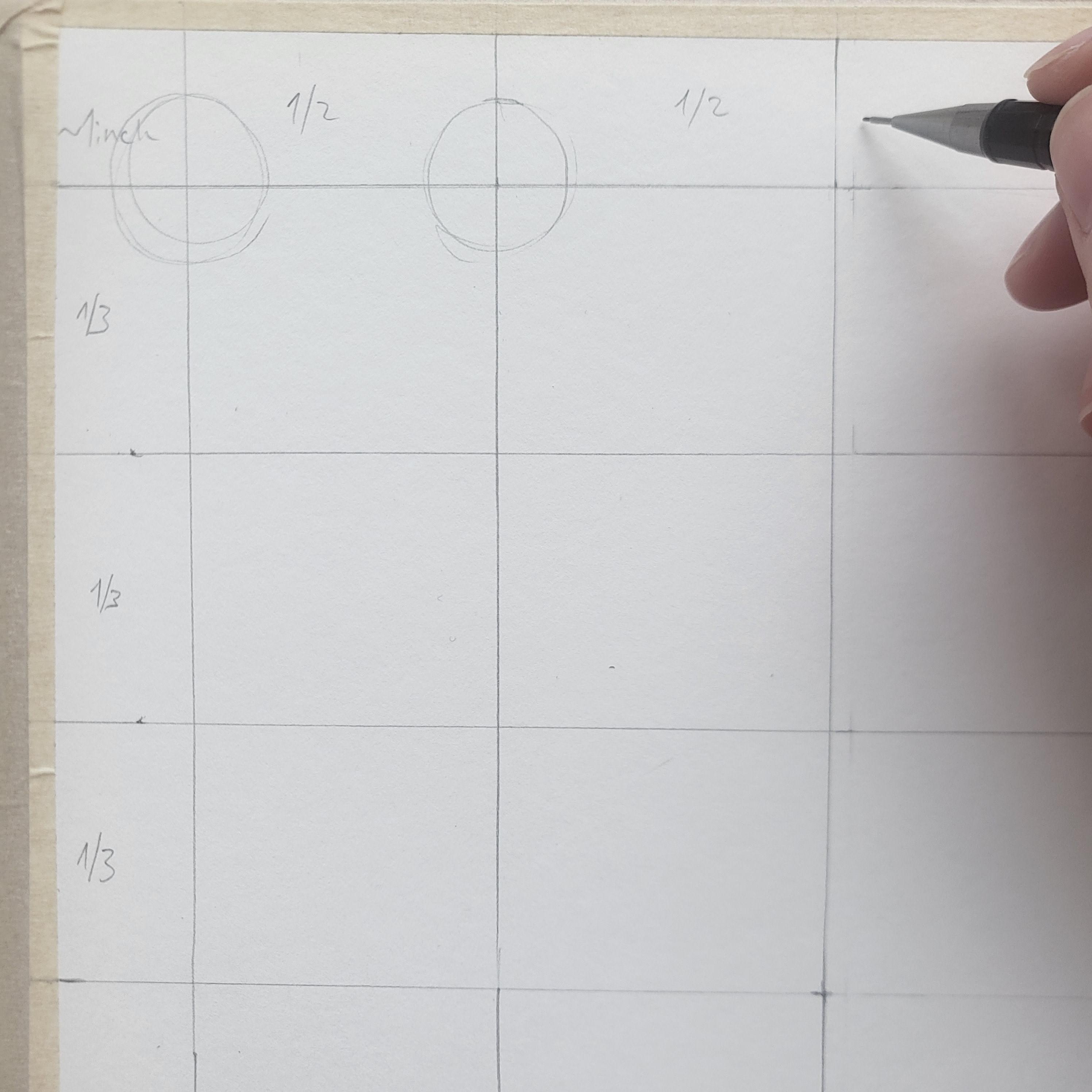
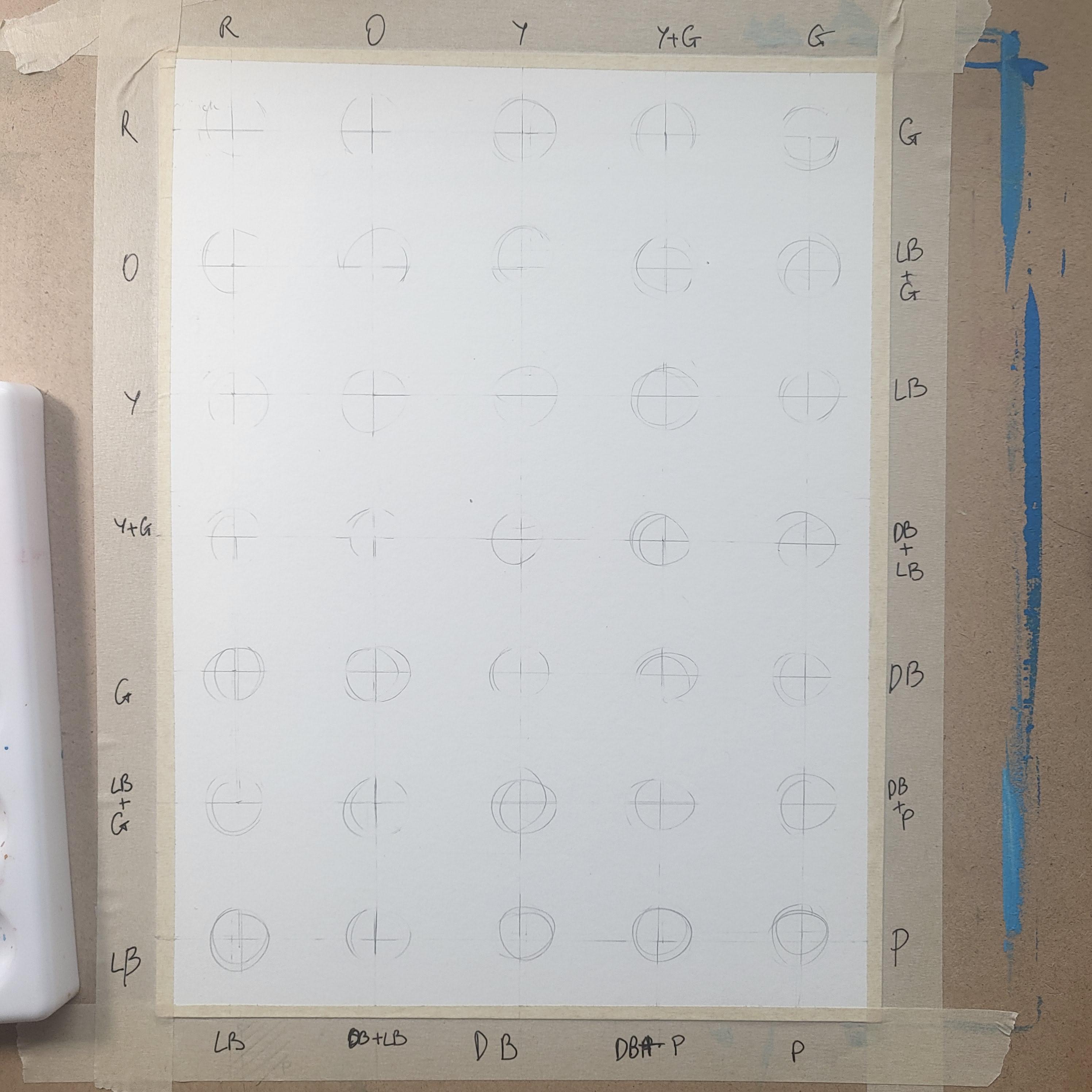
At the criss crosses of the grid, plan out your circles, by hand or with a compass. For my paper size, I got 35 circles (7 rows of 5).
Tip: You can also replace circles with any other shapes, aim for same size but if unsure, it's better to sketch smaller - you can always cover it up with paint later!
Erase the Grid
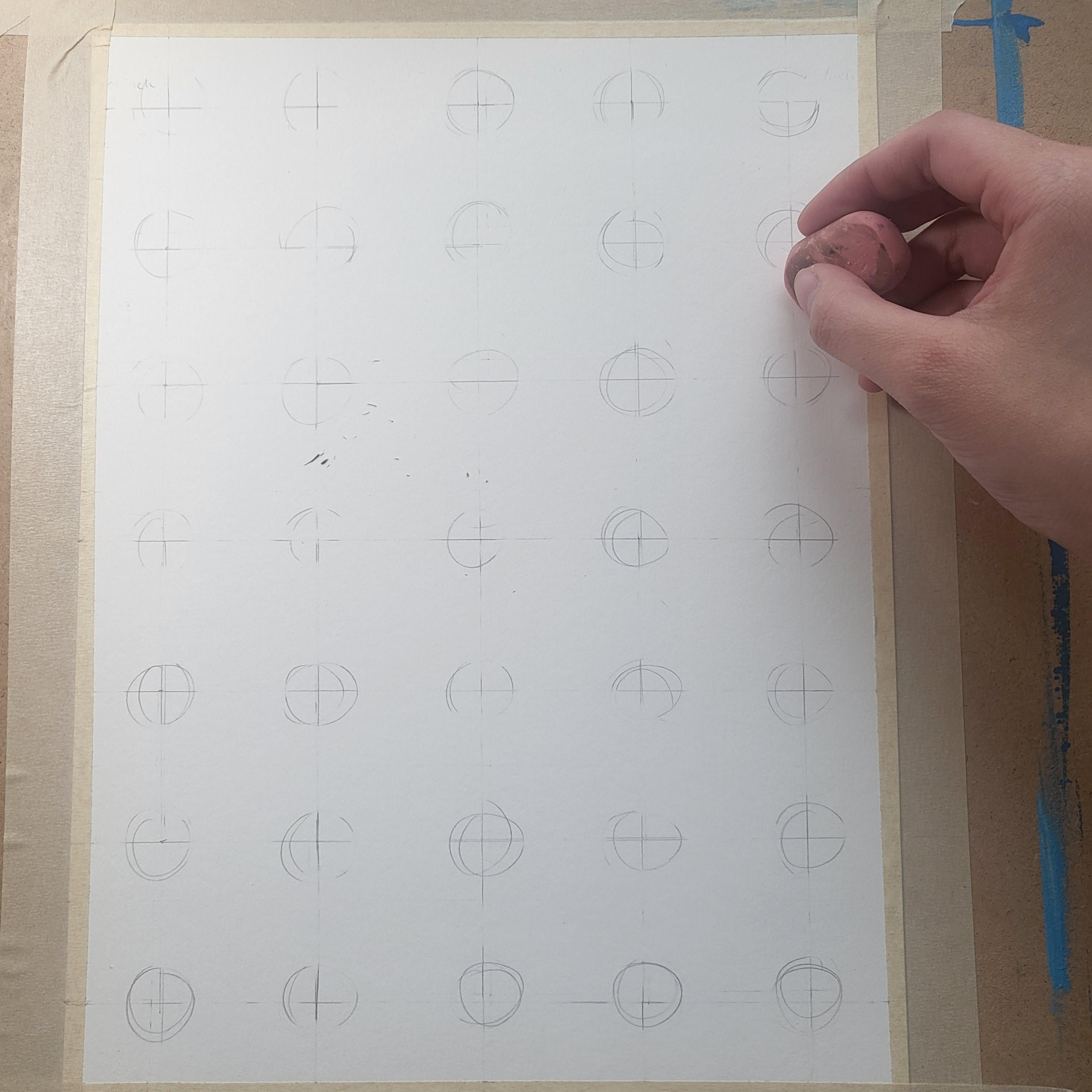
Erase all the lines except for the shapes. I recommend a softer rubber so it doesn't rip your paper. Always place it at an angle for a softer erasure.
Colour the Rainbow
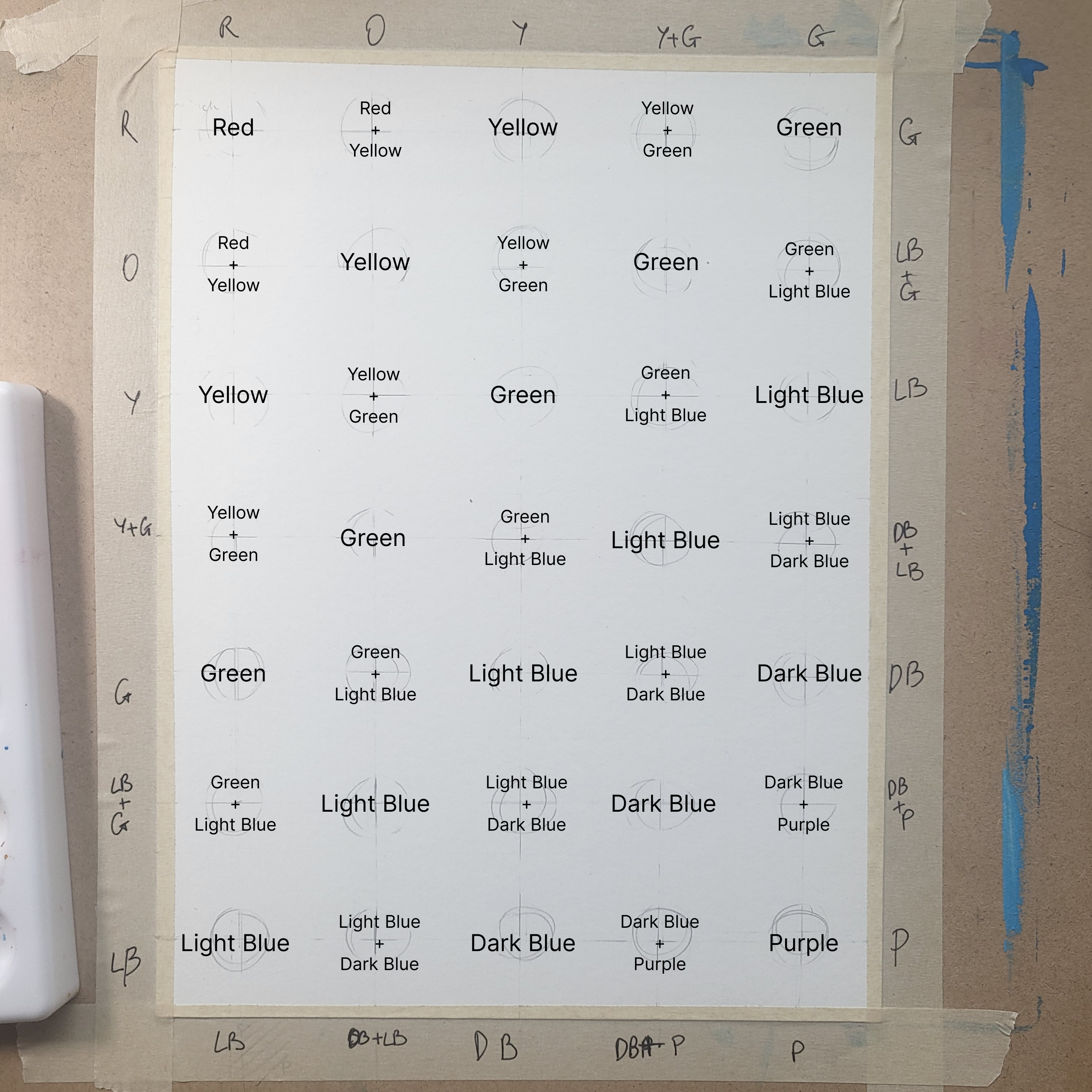
Follow the color grid in the image. Skip to Step 8 if you are familiar with blending colours.
In the image, top to bottom, left to right (portrait orientation):
- Row 1: Red | Red+Yellow | Yellow | Yellow+Green | Green
- Row 2: Red+Yellow | Yellow | Yellow+Green | Green | Green+Light Blue
- Row 3: Yellow | Yellow+Green | Green | Green+Light Blue | Light Blue
- Row 4: Yellow+Green | Green | Green+Light Blue | Light Blue | Light Blue+Dark Blue
- Row 5: Green | Green+Light Blue | Light Blue | Light Blue+Dark Blue | Dark Blue
- Row 6: Green+Light Blue | Light Blue | Light Blue+Dark Blue | Dark Blue | Dark Blue+Purple
- Row 7: Light Blue | Light Blue+Dark Blue | Dark Blue | Dark Blue+Purple | Purple
When painting, you want the brush to be damp but not too wet or the paint won't cover the pencil outline. If you want more saturated colours, let the first paint layer dry, then apply the colour again.
Tip: You can dry paint faster by blowing on it, using a fan or lowest fan setting of the hair dryer.
Mixing Colours
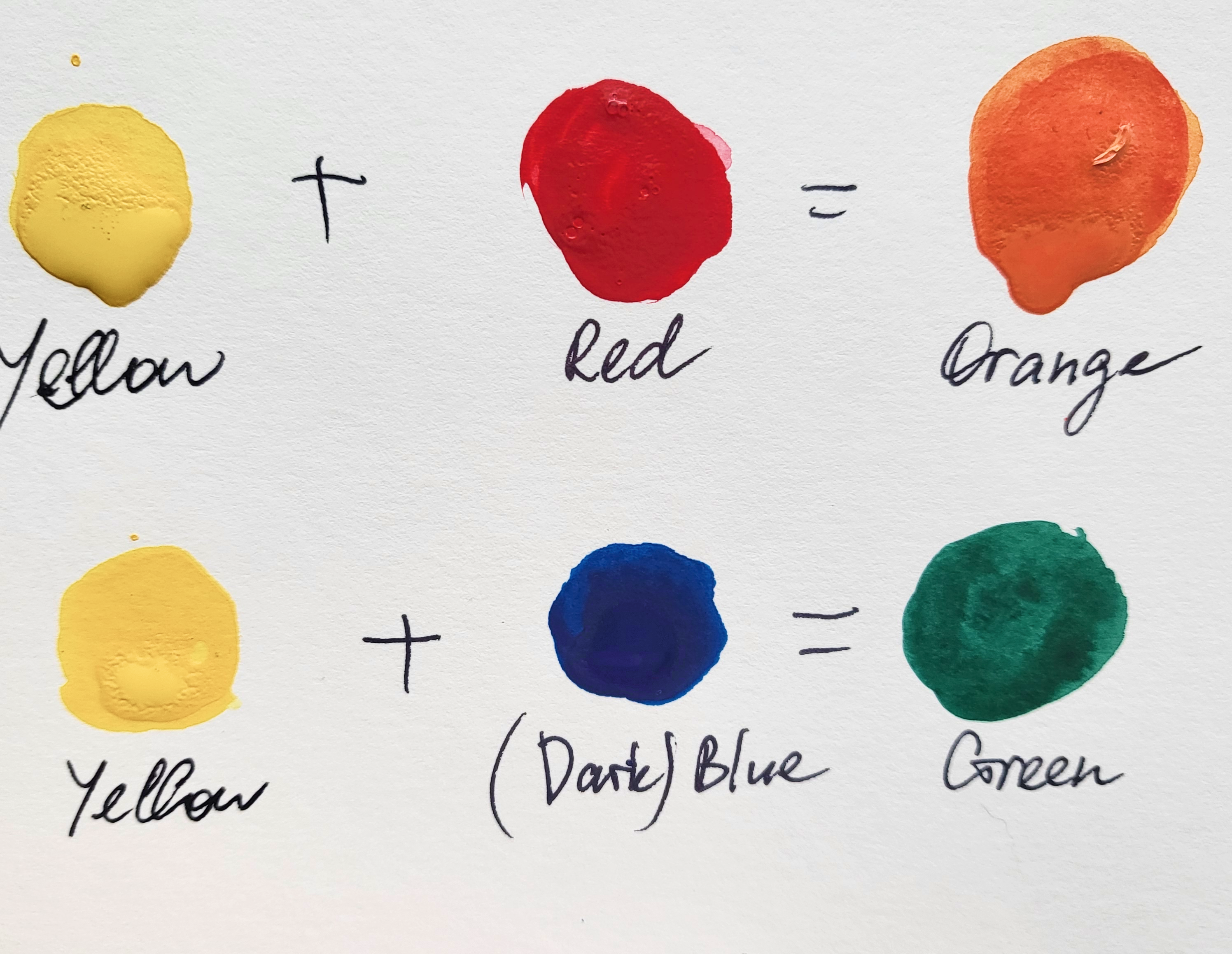
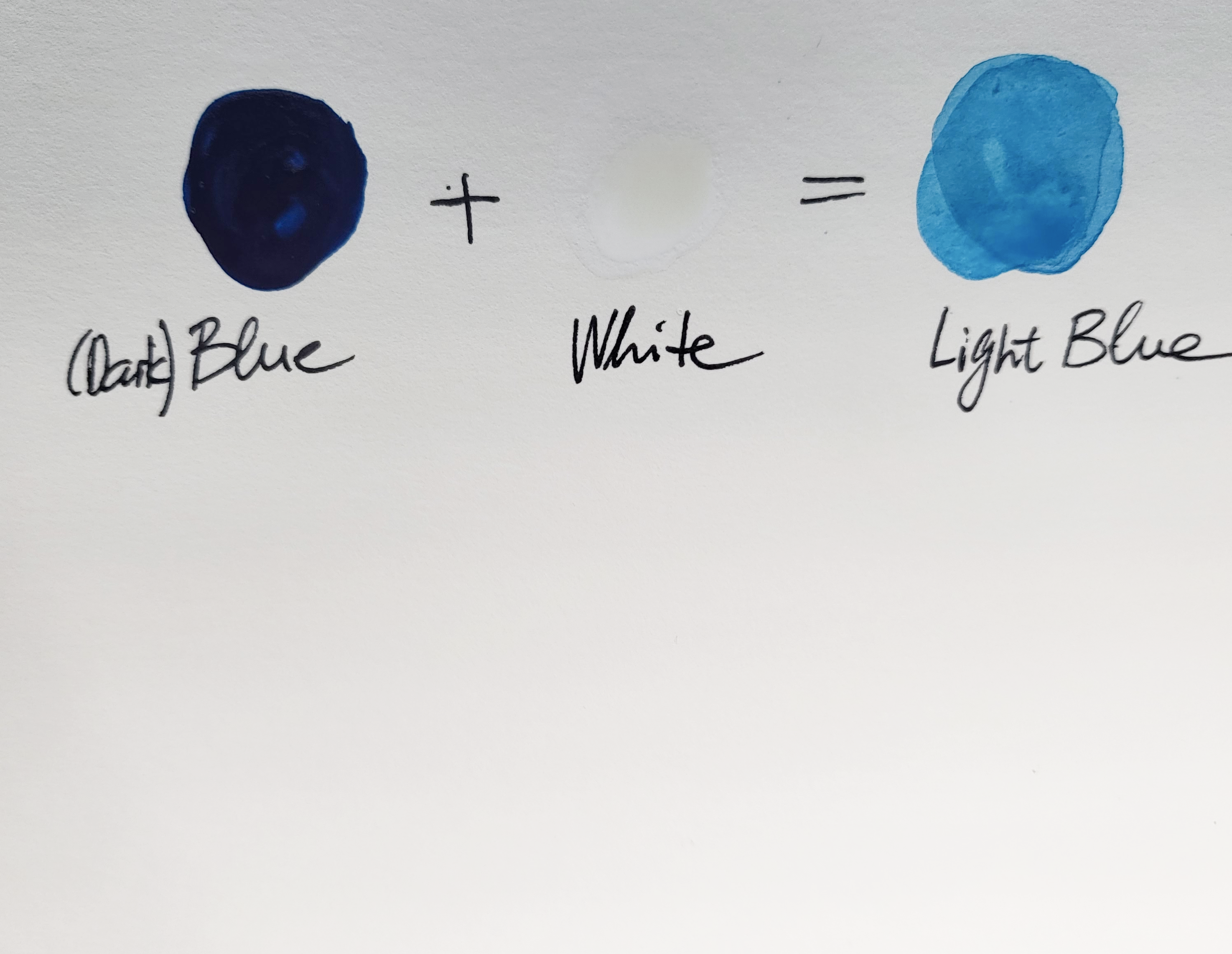
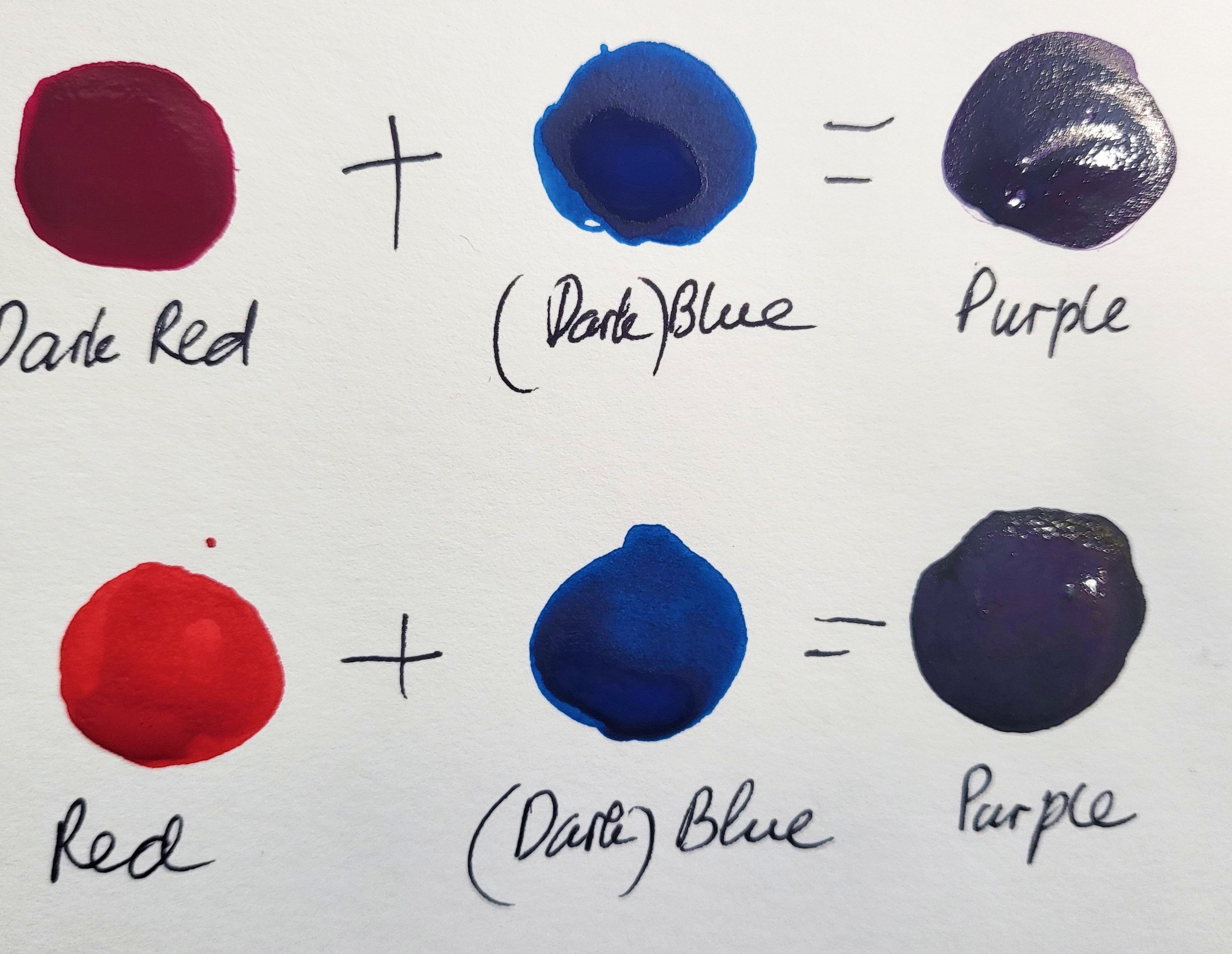
When mixing colours, it is best to squeeze out drops of paint into a slot or on a plastic lid to avoid colour contamination.
For example, to get orange you'd need to mix yellow and red. Pour equal parts yellow and red into a palette slot or one corner of the lid and use your brush to mix until you get consistent orange. After you're done painting the orange circles, swirl the brush in the water to remove colour and wipe on the towel to remove excess water.
To mix the other colours of the rainbow:
- Orange: equal parts yellow + red
- Green: equal parts yellow + blue
- Light blue: less blue + more white
- Purple: equal parts red + blue
Tip: If you don't like the shade, add 1 colour until you're satisfied. You can always add the other colour to compensate after. You can also add white to make any of the colours brighter, for example in my case with dark purple.
Finishing Touches
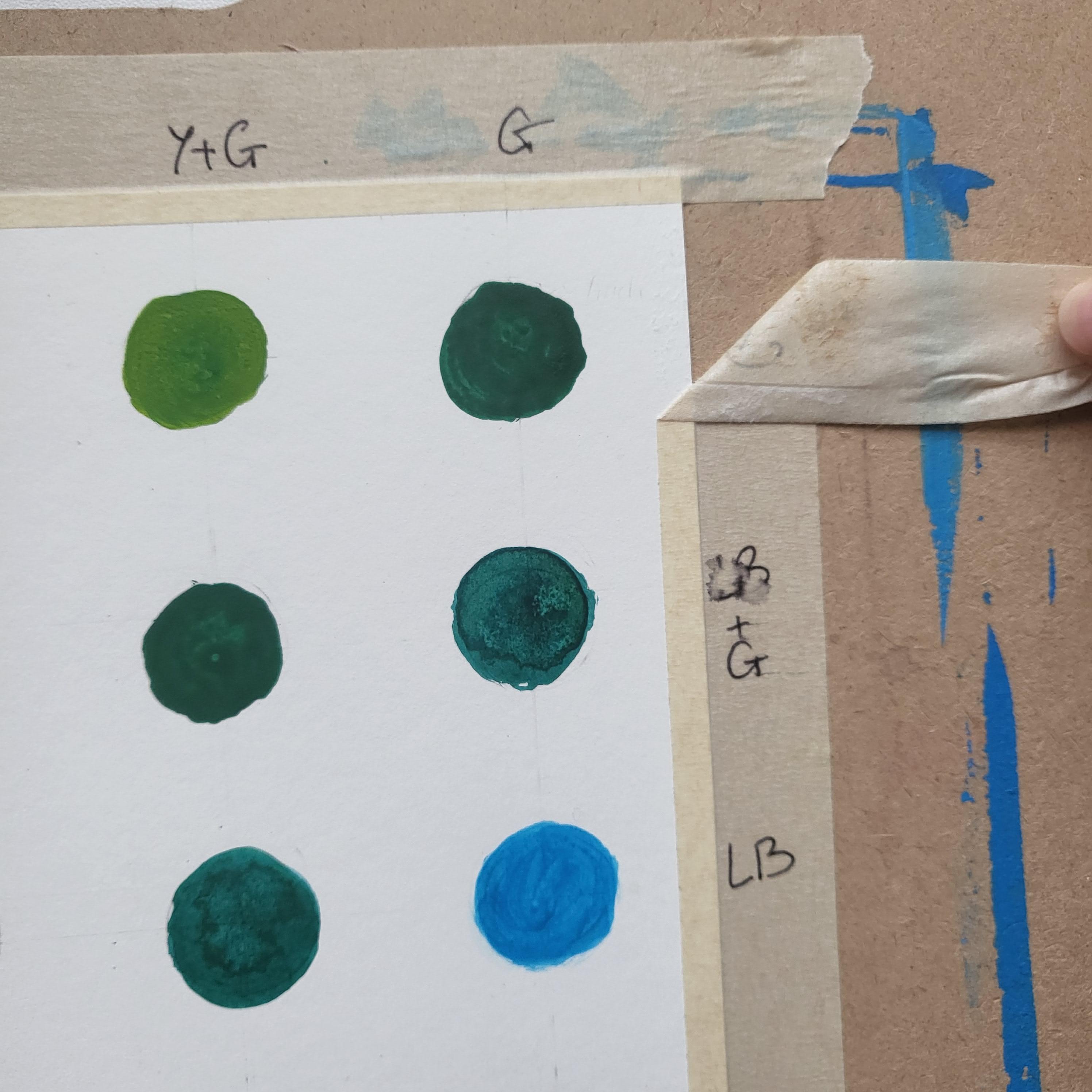
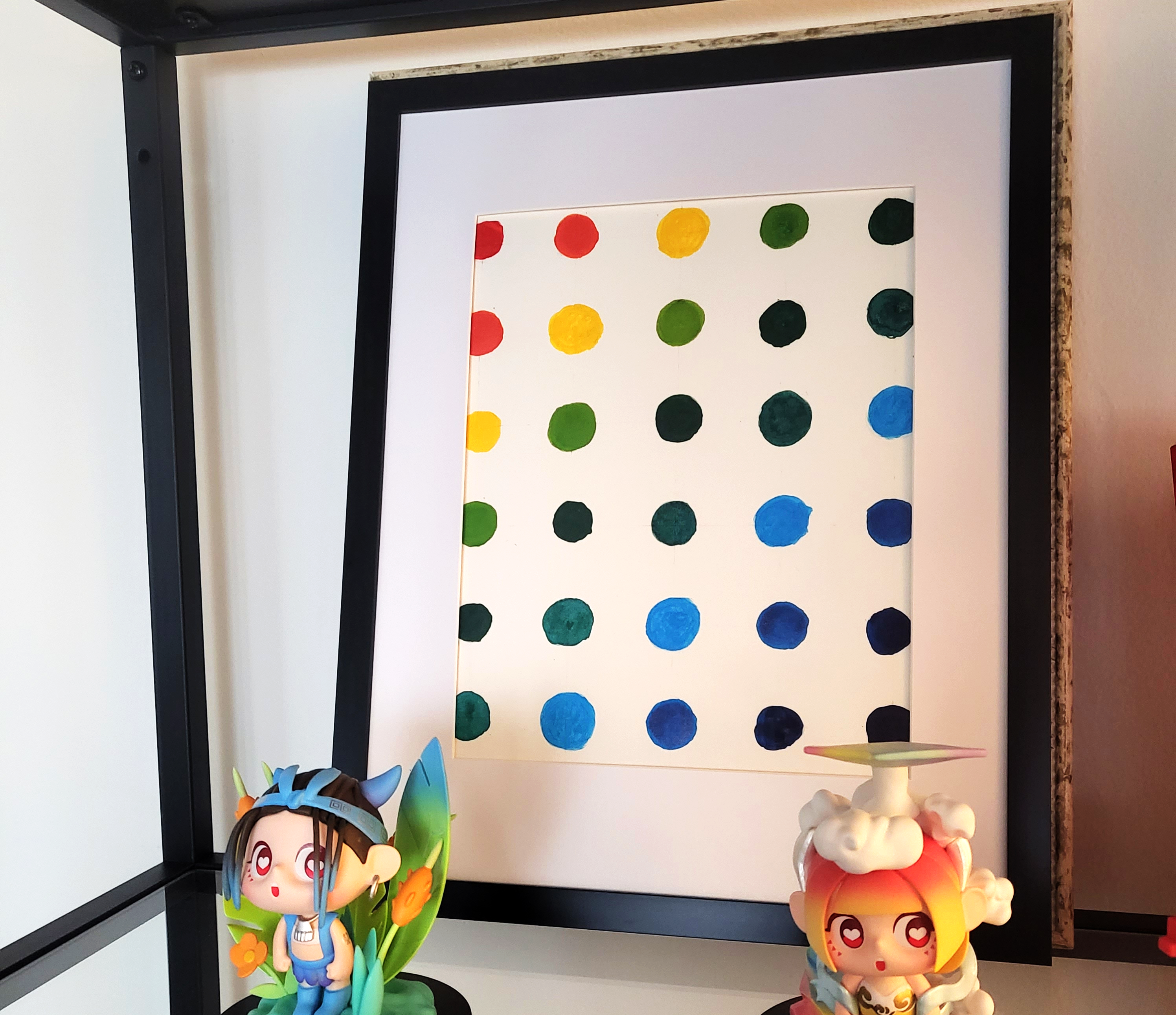.png)
Let the painting plenty of time to dry. Then remove the tape. To avoid ripping the edges, pull on the tape slowly and at an angle away from the direction you're pulling towards (see image).
Et voila! You did it!
You can finish your project by framing it to hang on a wall or, as in my case, display it on my bookshelf.
Gradient Alternative!
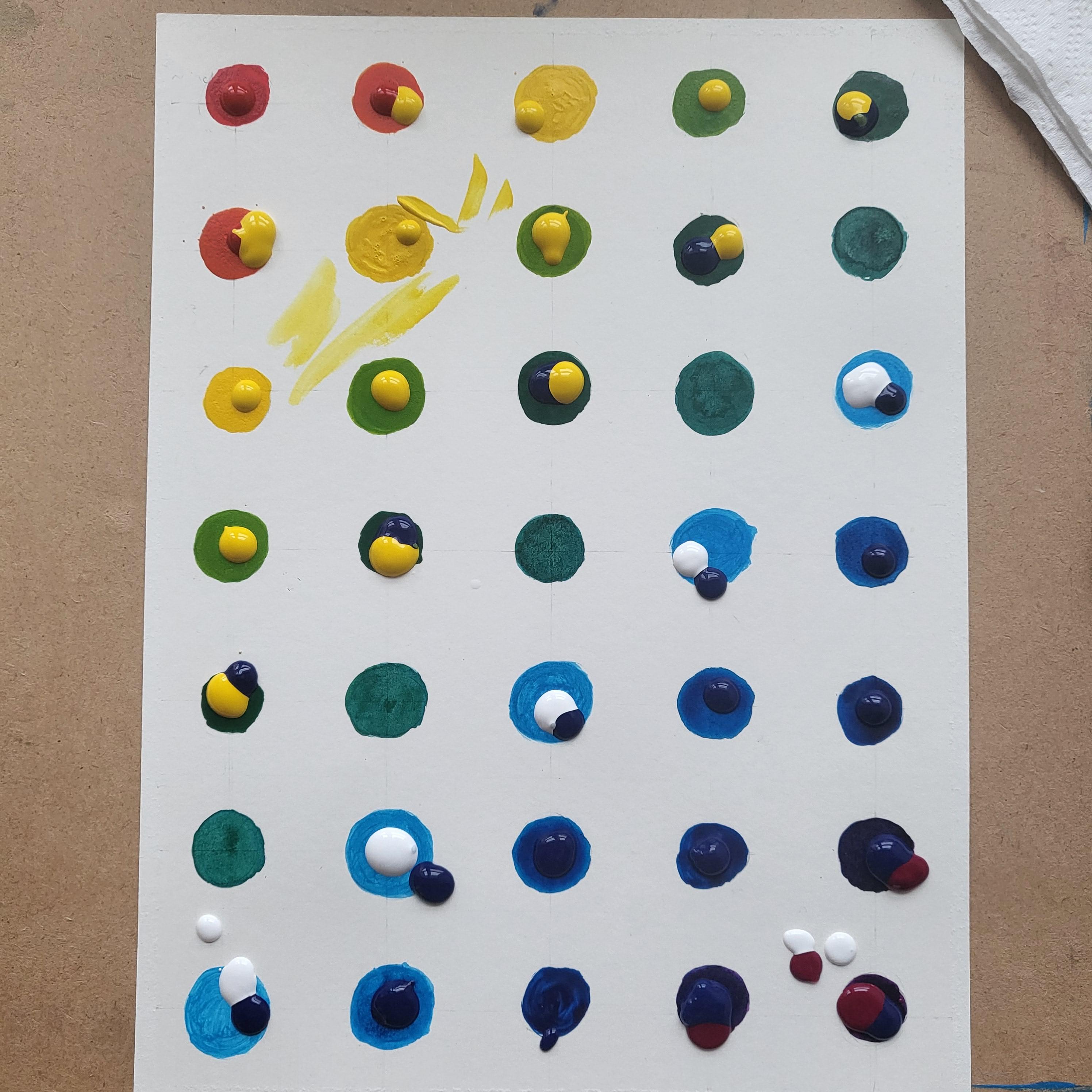
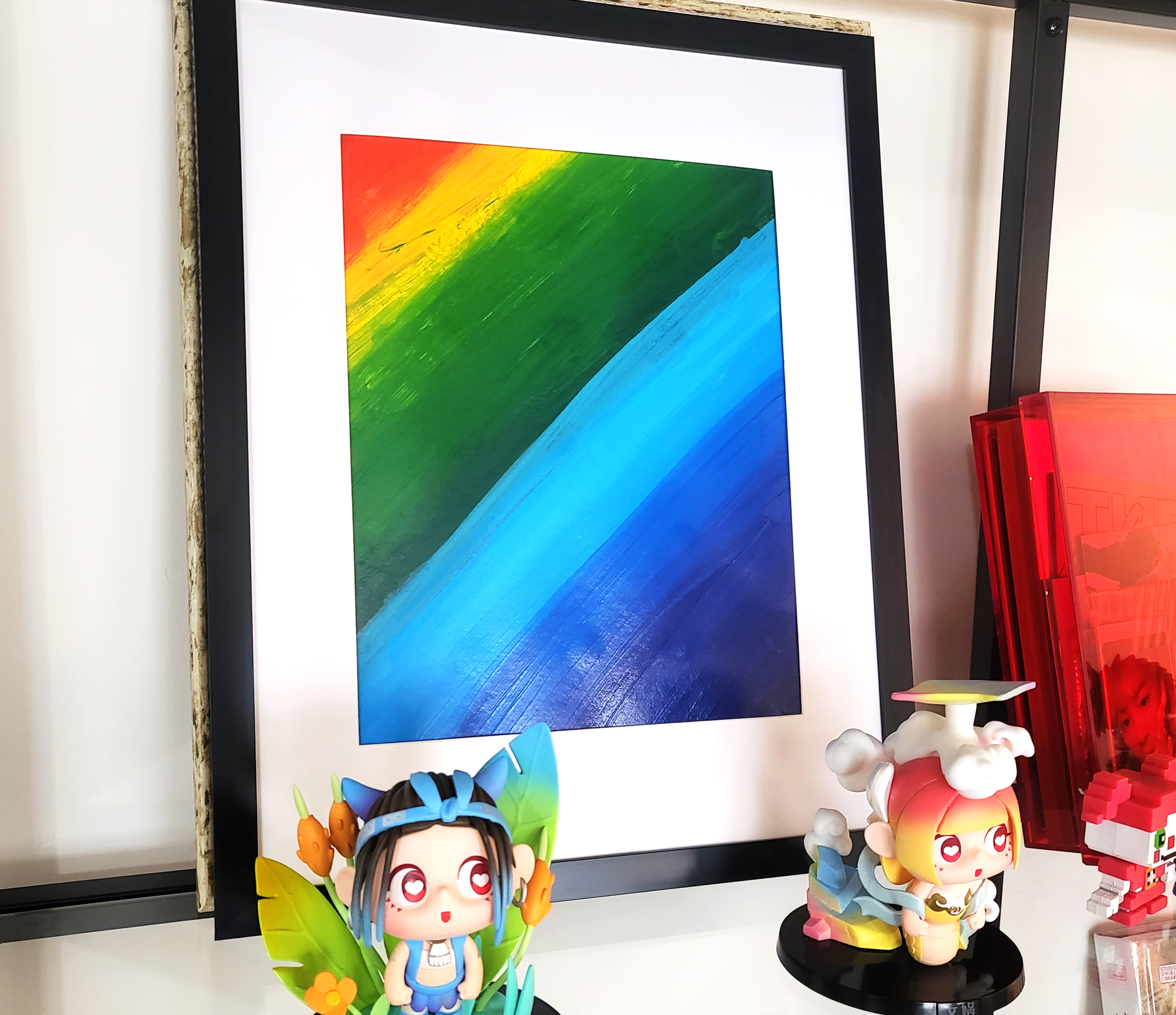
Side Quest
Feeling adventurous? Why not use the grid to drop the paint on the paper directly? Mix your colours inside the dots and then use a wider brush to paint broad diagonal strokes until no blank space is left.